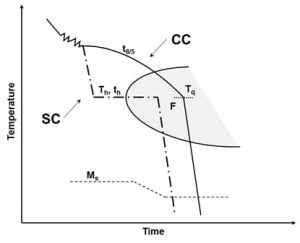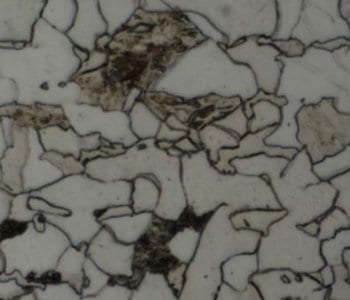 Numerous alloy concepts are being developed to adjust the microstructure and tailor the mechanical properties of advanced high strength steels to cope with reduced-weight and fuel-efficient applications requirements. Besides strength, weight reduction and formability requirements, atmospheric corrosion resistance is regarded as a one of the new challenges that are recently arising. Transportation industries e.g. railway vehicles, underground wagons and trucks that expose to alternative atmospheric conditions have brought attention to the need for high atmospheric corrosion resistance in addition to the basic requirements of reduced-weight and good strength-ductility balance.
Numerous alloy concepts are being developed to adjust the microstructure and tailor the mechanical properties of advanced high strength steels to cope with reduced-weight and fuel-efficient applications requirements. Besides strength, weight reduction and formability requirements, atmospheric corrosion resistance is regarded as a one of the new challenges that are recently arising. Transportation industries e.g. railway vehicles, underground wagons and trucks that expose to alternative atmospheric conditions have brought attention to the need for high atmospheric corrosion resistance in addition to the basic requirements of reduced-weight and good strength-ductility balance.
Weathering steels with a normal ferrite-pearlite microstructure are regarded as a common candidate for applications which require high atmospheric corrosion resistance due to their chemical compositions that contain small additions of Cu, Ni, P and Cr. However, the lack of their formability and relative low strength level are being an issue to be investigated. Since the dual phase microstructure (ferrite-martensite) can achieve a good combination of strength and formability, a reasonable number of studies have been conducted to change the ferrite-pearlite microstructure of weathering steels into a dual phase one through either intercritical annealing or hot rolling processes. However, in this work by Tarek Allam and Wolfgang Bleck from RWTH Aachen a new alloying concept is proposed to enhance the atmospheric corrosion resistance of dual phase steels in the as hot-rolled condition. The new alloying concept contains the main alloying elements that are responsible for improving the atmospheric corrosion behavior (Cu, Ni, P and Cr) and the alloying concept (C, Mn and Si) used to adjust a dual phase microstructure by hot-rolling processes.
 The proposed alloying concept is aiming at developing pilot-scale hot-rolled weathering-dual phase steel that combines a good strength-ductility balance and an enhanced atmospheric corrosion resistance. In order to accomplish this aim, the phase transformation behavior is studied by means of continuous cooling transformation diagrams. Based on real-process conditions, different hot-rolling schedules and cooling strategies are tested in laboratory-scale thermomechanical simulation experiments to design the proper process window that enables the adjustment of a dual phase microstructure. The corresponding mechanical properties are evaluated by tensile tensing of secondary mini-flat tensile specimens machined from thermomechanical treated blocks. The successful laboratory-scale processing parameters are transferred to the pilot scale to produce the hot-rolled sheets required for subsequent characterization. The hot-rolled sheets are characterized by tensile testing and quantitative metallography. However, the corrosion behavior is to be presented in a future report.
The proposed alloying concept is aiming at developing pilot-scale hot-rolled weathering-dual phase steel that combines a good strength-ductility balance and an enhanced atmospheric corrosion resistance. In order to accomplish this aim, the phase transformation behavior is studied by means of continuous cooling transformation diagrams. Based on real-process conditions, different hot-rolling schedules and cooling strategies are tested in laboratory-scale thermomechanical simulation experiments to design the proper process window that enables the adjustment of a dual phase microstructure. The corresponding mechanical properties are evaluated by tensile tensing of secondary mini-flat tensile specimens machined from thermomechanical treated blocks. The successful laboratory-scale processing parameters are transferred to the pilot scale to produce the hot-rolled sheets required for subsequent characterization. The hot-rolled sheets are characterized by tensile testing and quantitative metallography. However, the corrosion behavior is to be presented in a future report.
The new alloying concept exhibits a phase transformation behavior that facilitates the adjustment of dual phase microstructure by adopting a continuous cooling strategy after hot rolling and makes the step cooling strategy unnecessary. The evaluated mechanical properties of the pilot-hot rolled sheets correspond to the typical characteristic values of dual phase steels. Furthermore, the characterization results confirm only small differences between the laboratory-scale and pilot-scale processing, which opens new horizons for adjustment of microstructure and prediction of mechanical properties by secondary specimens from laboratory-scale thermomechanical treated blocks.

















